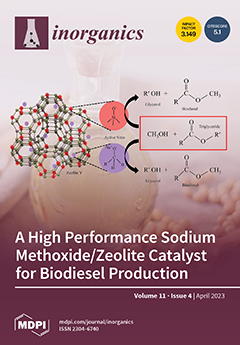The oxygen evolution reaction (OER) is a crucial half-reaction in water splitting. However, this reaction is kinetically sluggish owing to the four-electron (4 e
−) transfer process. Therefore, the development of low-cost, stable, highly efficient, and earth-abundant electrocatalysts for the OER is
[...] Read more.
The oxygen evolution reaction (OER) is a crucial half-reaction in water splitting. However, this reaction is kinetically sluggish owing to the four-electron (4 e
−) transfer process. Therefore, the development of low-cost, stable, highly efficient, and earth-abundant electrocatalysts for the OER is highly desirable. Metal oxides derived from metal–organic frameworks (MOFs) are among the most efficient electrocatalysts for the OER. Herein, Ce–MOF-derived CeO
2/graphene oxide (GO) composites were successfully prepared using a facile method. The composites with 0, 25, 50, and 100 mg GO were named CeO
2, CeO
2–GO-1, CeO
2–GO-2, and CeO
2–GO-3, respectively. The physicochemical characteristics of the electrocatalysts were assessed using several analytical techniques, including X-ray diffraction (XRD), scanning electron microscopy (SEM), high-resolution transmission electron microscopy (HR-TEM), X-ray photoelectron spectroscopy (XPS), and Brunauer–Emmett–Teller (BET) analysis. The TEM results revealed that the CeO
2 had a sheet-like morphology and that a GO layer was noticeable in the synthesized CeO
2–GO-3 composite. The characterization results confirmed the formation of impurity-free CeO
2–GO composites. The OER activity and stability were measured using cyclic voltammetry (CV), linear sweep voltammetry (LSV), chronoamperometry (CA), and electrochemical impedance spectroscopy (EIS). The CeO
2–GO-3 electrocatalyst has a smaller Tafel slope (176 mV·dec
−1) and lower overpotential (240 mV) than the other electrocatalysts. In addition, it exhibited high cyclic stability for up to 10 h. Therefore, the inexpensive CeO
2–GO-3 electrocatalyst is a promising OER candidate.
Full article





